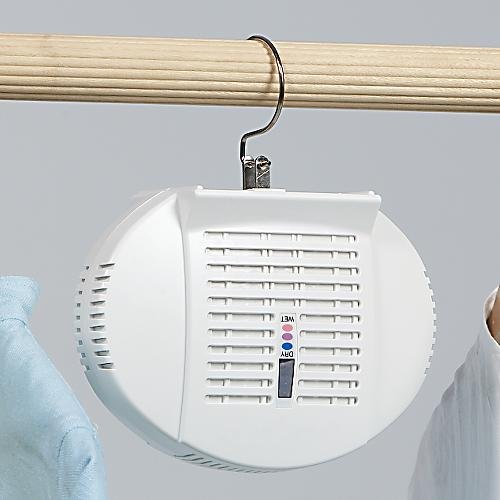Dehumidifiers make use of a electric (much like an aura conditioner's electric) or chemical adsorbents to get rid of moisture in the air without cooling the environment.
A electric dehumidifier utilizes a fan to attract indoor air on the warmth exchange coil. The coil is nearly freezing. Water in mid-air condenses around the coil and it is drained. Another warmth exchange coil reheats the environment, that the dehumidifier exhausts in to the room.
A electric dehumidifier dumps warmth lost in the compressor and fan motors in to the air. It returns towards the indoor air the warmth produced through the dehumidifier turning water vapour to liquid.
Chemical adsorbent dehumidifiers
This kind of dehumidifier is made for hot, damp environments and isn't really suited to use within Canada.
Chemical adsorbent dehumidifiers absorb moisture in the air having a "desiccant"--a drying out agent for example silica gel. The desiccant is on the warmth exchange wheel. Another air loop dries the wheel and exhausts the, moist air outdoors through special ducting.
A chemical adsorbent dehumidifier uses more energy than the usual electric dehumidifier. It is just cost-effective if this uses gas for warmth exchange--after which only when gas can be obtained in a low summer time rate.
Homemade dehumidifier
Some inventive people use bags of road p-icing salt to soak up moisture in the air. The wet salt solution drainage right into a pan or floor drain, drying out the environment. Since the salt runs served by water taken off the environment, it should be changed. The machine doesn't have moving parts.
By trying this homemade dehumidifier, keep in mind that salt is extremely corrosive to metals and quite hard onto the skin.
Dehumidifying ventilators
This kind of dehumidifier includes a sensor-controller and exhaust fan. You place the sensor-controller to operate when humidity reaches a collection level. A dehumidifying ventilator is especially effective when the humidity source is within your basement.
Dehumidifying ventilators don't recover warmth however they use less electricity than electric dehumidifiers. They aren't good at hot, muggy weather, because they bring more outdoors air in to the house. They may be good at cold temperature.
A dehumidifying ventilator depressurizes your basement, which could cause combustion gas splilling. Make certain your heating contractor inspections the ventilation for the gas furnace, hot water heater and wood-burning home appliances. Get a deadly carbon monoxide warning device should you use a dehumidifying ventilator.
Selecting a Dehumidifier
Dehumidifier purchase costs
Electric dehumidifiers are complex, low-production machines and aren't low-cost products. Spring appears to be the greatest time for you to buy: within the last couple of years sellers have held sales early early in the year with savings of to 0.
The greater water a dehumidifier holds --that is measured in litres or U.S. pints each day--the greater it is. You have to pay more for special features.
In 2000, you will probably pay between 0 and 0 for any unit ranked at 10 L (21 U.S. pints or 2.1 imperial woman.) each day--appropriate for any small house having a moderate moisture problem. The cost increases to between 0 and 0 for any unit having a capacity of 20 L (42 U.S. pints or 4.3 imperial woman.) each day--appropriate for any large house with increased severe problems.
Running costs for models are comparable when they both have a similar Efficiency Factor. The following section describes the Efficiency Factor.
Create cut costs by purchasing one without automatic defrost. If your room is simply too awesome, a dehumidifier can frost over and prevent getting rid of moisture. A frosted-over dehumidifier left running for any very long time will break lower.
Obtain a unit having a two-speed fan. They're quieter at lower humidity, which cuts down on the nuisance factor. Test all models within the store for noise level, particularly if you intend to play one in or near a bed room.



